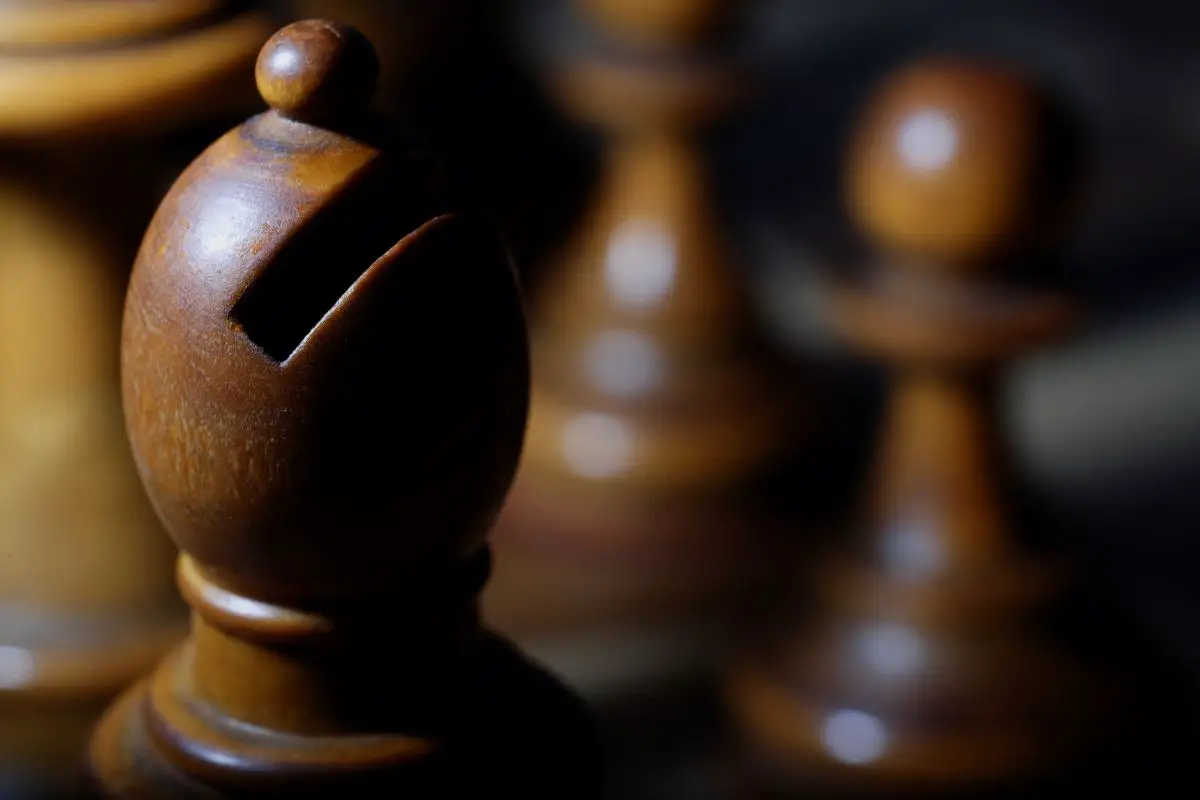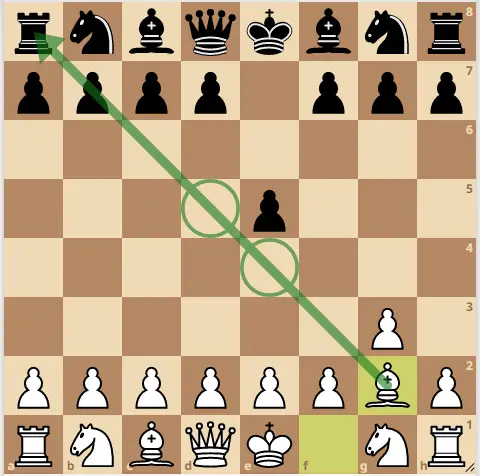As you learn chess basics, you’ll realize each piece has unique value and symbolism. For example, knights resemble castle protectors, and pawns represent soldiers protecting the royals behind them.
But what does the bishop mean in chess, and what it represents?
The bishop represents the church, a mighty and rich force in medieval times, so it’s no surprise that a church-symbolizing figure such as the bishop made its way into the game.
On top of that, a bishop is such a powerful piece on the chessboard, and it has a pivotal role in outmaneuvering your opponents.
In this article, we’ll tell you everything you need to know about bishops, from their symbolism to how to use them to your advantage.
What’s a Bishop in Chess?
A bishop is a chess piece representing the church’s power in the army. It has a rounded top and a cut into it. Why is there a cut on the top, you ask?
There are two explanations for this. The first is that bishops resemble war elephants in the Shatranj forebear of chess. The second is that the cut symbolizes the “mitres,” the tall hats that high-ranking clergy members wear.

In chess, each player starts with two bishops; the kingside and the queenside bishops. The kingside bishop is positioned between the king and the knight, whereas the queenside bishop lies between the knight and the queen.
The bishop moves diagonally across the chessboard and can move any number of squares in a single move as long as there’s nothing on its way.
However, bishops are restricted to the square color on which they start the game. In other words, one bishop can only move on the light squares, while the other only moves on the dark ones.
The Power of Bishops
Even though the bishop is the third most powerful piece in chess, it can reach the strength of the rook with proper utilization. That’s because bishops can potentially travel all over the board with diagonal movements.
The bishop’s strength lies in its ability to move between two distant points on the board. If you have enough space, bishops can be powerful tools when planning for checkmates or defending against looming threats.
Furthermore, moving your bishops correctly gives you more control over multiple diagonals, which improves your chances of winning the game.
Here are five ways to utilize the full power of bishops and take your chess game to the next level.
1. Use Open Diagonals
Bishops are obstructed by pawns at the beginning of the game, which hinders their movement across the board.
Since their range of movement is restricted, it can be challenging to use bishops effectively. However, moving your bishops to open and long diagonals helps you unlock their full potential.
In openings, you need to move your pawns to provide open diagonals for your bishops. That way, you can use bishops to exert pressure on your opponent.
Remember that bishops can move diagonally as long as nothing is blocking their way, creating excellent opportunities to affect the game, even if they’re in the corner or side of the board.
2. Active and Passive Bishops
If a bishop can move freely outside of the pawn chain, it’s an active bishop. On the other hand, a passive bishop is the one that’s obstructed by your pawns.
Both types of bishops can be influential if you use them properly. However, active bishops are usually more effective as you can use them to drive your opponent’s pieces out and make strategic exchanges.
3. Good vs. Bad Bishops
The terms “good” and “bad” are often used to describe bishops in terms of effectiveness, position, and mobility on the board.
A good bishop has greater mobility and flexibility of movement, providing chances to exert pressure on your opponent.
For example, if your bishop is on the same square color as the majority of your pawns, it’s a bad bishop. Why? Because your pawns hinder its movement, so in such cases, you can’t use your bishops to attack your opponent.
On the other hand, a good bishop usually occupies the opposite square color as most of your pawns. That way, you can utilize your good bishop to attack and maneuver your opponent simultaneously.
4. The Fianchetto
A fianchetto is a chess opening strategy that involves developing a bishop by moving it to the second rank. That way, the bishop is placed on a long diagonal aiming right across the center of the board.
White fianchettoes via pawn g3, Bg2 (From here, the bishop cuts aross the board, controlling the long diagonal and central squares.)

The term “fianchetto” comes from the Italian word “fiasco,” which means flank. The first step in a fianchetto is moving a pawn one or two square forwards on either the b-file or the g-file. This pawn movement opens up the long diagonal for the bishop.
The second step is to move the bishop to the second rank into the newly opened diagonal.
This opening strategy is helpful to exert pressure on the center of the board while providing defense for king castling. It also allows for supporting your central pawns, thus creating a solid pawn structure.
The fianchettoed bishop is utilized in several chess openings, such as the Sicilian Dragon, the King’s Indian Defense, and Larsen’s Opening.
5. Endgame Bishops
Bishops can be a real game-changer in endgame situations, especially when the remaining pieces are mostly pawns.
Thanks to their long-ranged diagonal movement, bishops can guard your pawns and threaten your opponent. This makes it much easier to promote your remaining pawns and achieve a checkmate.
However, in some cases, having an additional bishop in the endgame may not guarantee a checkmate against your opponent’s king.
For example, let’s say your last pawn is a rook pawn, and the promotion square’s color doesn’t match your bishop’s square color. In that case, the opponent’s king might act as a barrier, preventing promotion and resulting in a stalemate.
Despite the material advantage for black, the game is a dead draw since black’s bishop is not on light squares.

Similarly, endgames, where the white and the black bishops remain and occupy different colors, are likely to result in a draw.
In Conclusion
So you’re asking about the bishop meaning in chess and what it represents? The bishop is a chess piece that resembles the power of the church in the army.
The bishop can move diagonally in any direction for any number of squares, as long as nothing is obstructing its way. Each player starts the game with two bishops—both of which are only able to move on a specific square color.
Ranking as the third most powerful chess piece, the bishop can be a game-changer in openings and endgames, thanks to its ability to control different diagonals and threaten your opponent.


